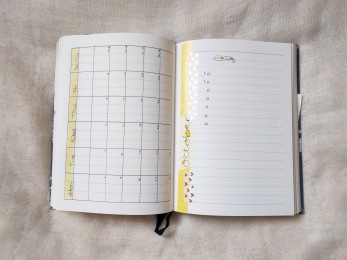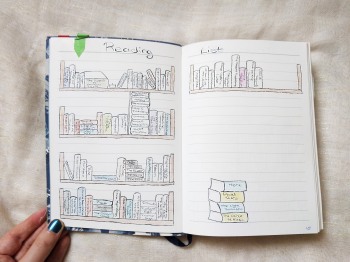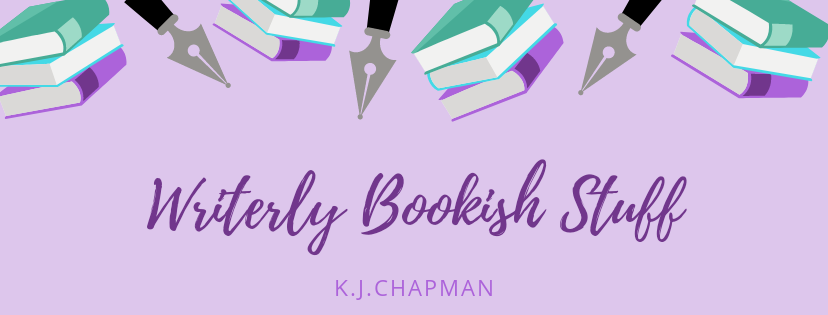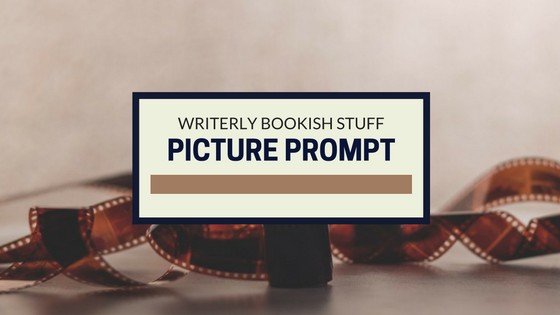
Guess who’s back on my blog today? Yep, fantasy author, Sarina Langer. Sarina has taken time out of her busy release week for her new book, Wardens of Archos, to guest post on Writerly Bookish Stuff.
Sarina is a bullet journal (BuJo) advocate, and is here today to explain what a bullet journal is, why she benefits from using one, and how you can get started on your own. I’m all ears for this post. Over to you, Sarina!
Bullet Journals
Chances are you’ve at least heard of the bullet journal, even if you’re not sure what it is, exactly. It’s grown in popularity over the last few years, and sites like Instagram and Pinterest are full of beautiful examples. The bullet journal is a way of organising anything you want, in a way that suits you. I recommend you check out the original website, too.
What I love the most about my bullet journal is the flexibility, the creativity, and the ability to plan and organise everything the way I want. You can imagine it like a planner that does exactly what you need, without limitations. When you buy a basic planner or a diary, you have a page for each day or a two-page spread for each week, but sometimes you just want something… more.
If a week is going to be quiet, you can use as little space for it as you think is necessary. If you know one week is going to be busy and one page won’t do, you can spread it out over as many pages as you need.
But there is one downside, and it’s why many people eventually give up on it. Your bullet journal takes time. Why draw a spread for every month when a regular planner already comes with twelve? Why set aside time every Monday morning to write down every day that week and date it, when any planner you can buy already has that? I get your apprehension. There are days when I’m not sure I can be bothered, and it’s on those days that I look to more basic spreads. I’m not artistically creative. If you told me right now to draw a hedgehog, I’d need a reference picture and it still wouldn’t be pretty. I’ve seen some incredibly beautiful bullet journals on Pinterest (my board right here is full of them!), and I assure you mine looks nothing like that.
Our days are busy, sometimes chaotic, and time is precious. I understand not wanting to waste a lot of time on something you can buy with no effort in most shops for little money, and if that’s what you want to do, go for it! But I hope I can show you today that your Bullet Journal doesn’t need to take a lot of time and still look pretty(ish).
These are my basics:
The Key
Your key is usually found at the front (if you want to make it harder on yourself and stick it on page 97, go for it – as I said, you can do anything you want in this thing), and it’s a short, easy summary of how you’ll use your bullet journal.

The basics are your code – the signage you use for completed tasks, started-but-unfinished tasks, priorities, and so on. You can include anything you like in this, such as appointments, important meetings, or research you want to do; your bullet journal is flexible!
I recommend just sticking to the basics if you’re starting your first journal, and leave a bit of room in your key to add to it as you go. Your preferences will likely change as you go, and you can adjust, add, and cut as you need to.
My own preferences have changed quite a bit in my current bullet journal (BuJo #2), so I’ve included an updated version of the key partway through it. I’ve also marked the page with washi tape so I can find it again easily should I need to.
Yearly Spread
Don’t you just love it when a new year starts, and you have all the options? What will you do that year? Which goals will you set? What are your priorities going to be?
I love planning, friends, and your yearly spread is a good place to do that on a large scale.

For 2017, I did something a little more ‘extravagant’ than I usually do. (writing out all those numbers took time, you know!) I have plenty of space for monthly goals and appointments, which I love. What I don’t have is a page dedicated to my goals this year, so when the time comes to create next year’s spread, I’ll include space for that. I do have two double spreads with goals (colour-coded and categorised, naturally) and ideas on how to achieve them, but really I just want a list where I can tick of goals as I hit them.
So, 2018’s calendar is going to be more basic with a year-long list of goals.
Monthly Spread

I tried so many different designs for this before I found one that works for me. My monthly calendar is on one side, and my to-do list for each month is on the other. That way I can pencil in important meetings and release dates and things like that, and have everything I want to achieve on the same spread. I’ve experimented with various levels of intricacy and detail, but in the end this minimalistic spread works best. It saves me time, and it has everything I need at one glance.
Weekly Spread
I’ve tried even more layouts here – my bullet journal is a mess of failed spreads, and that’s mostly the weekly spread’s fault. I’ve tried everything from having all the info on one, crammed page (which didn’t leave me anywhere near enough space) to having a double spread, to using four full pages for my weekly goals. Minimalism won again.
While layouts with individually drawn boxes and leafs and clouds and little kittens look great, I don’t have the time to draw all that (and, as we’ve already established, I don’t have the skills, either). A bit of washi tape (which I’m addicted to, by the way) and a basic layout is all I need.
My Bookshelf

This was one of the first things I added. My first list was just that, a list, but my second attempt is a little prettier. Every book I buy (books I don’t own yet don’t make it onto this spread) goes on here, and every book I’ve read I colour in.
My tbr is a mess and I’m sure you’re quite aware yourself that it can feel overwhelming, but thanks to this spread I have a good idea of how many books I actually have. Outside the bullet journal, my tbr exists in two places: my actual shelf, and my kindle where the books are in no useful order whatsoever. If it wasn’t for this spread I’d have no idea how many unread books I currently own.
Blog Posts & Guest Posts
This is becoming even more relevant to me now that I’ve started building my freelance writing business. Previously, I’ve used my bullet journal to plan future blog post ideas, make a note of whether I’d written the first draft, whether they were ready and scheduled, which day they’d publish, and so forth. But now I’m also using it to keep track of all my freelance writing jobs and opportunities (like this one!) by writing down who the post is for, what my word count limit is, and when my deadline is.
This way I can see at one glance what I’m doing for whom and when they want it by. Yay for organisation!
Here are some more ideas of what you can do:
Habit tracker
Dream journal
List of films you want to watch
Places you want to visit
Savings tracker
A list of home improvements
Birthdays
Passwords
Gift ideas for your loved ones
Blog post planner
Social Media Exposure Tracker
Content Calendar
Full disclosure: I actually use some of these myself but they’re not in any state to be shown off anywhere! As I said, I’m artistically challenged.
There are so many things you can try and adjust that my main advice is to start small, with the basics, and add to it as you learn what you need from your bullet journal. If you want to be creative and intricate, go ahead, and if you want to keep it simple, like I do, go ahead with that, too. You can try a bit of both, if you like! That’s the beauty of your bullet journal – it’s yours, in every way.
And if you realise fifty pages in that you no longer want to use a specific spread, or try a different layout, good news: you can!
Happy journaling and organising, people!
 Sarina is the author of the Relics of Ar’Zac trilogy. The first book in the series, Rise of the Sparrows, was released in late May 2016. She’s currently working on the sequel and a new fantasy duology.
Sarina is the author of the Relics of Ar’Zac trilogy. The first book in the series, Rise of the Sparrows, was released in late May 2016. She’s currently working on the sequel and a new fantasy duology.
She’s obsessed with books and all things stationery, has a proud collection of over twenty notebooks, and squees every time she buys a new notebook, pens (hmmm, fountain pens ❤ ) or highlighters.
In her free time she reads fantasy and sci-fi novels, plays video games, and researches human sacrifice traditions and the end of the universe.
Where to find Sarina & her books:
For use of content in this post, permission must be sought from the author, Sarina Langer.







 Katie Masters’ books include Brenna Morgan and the Iron Key, and The Bone Dancer.
Katie Masters’ books include Brenna Morgan and the Iron Key, and The Bone Dancer.

 Faith Rivens is the author of the novella, Eléonore. Her second novel is due to release later this year.
Faith Rivens is the author of the novella, Eléonore. Her second novel is due to release later this year.
 Sean thinks he’s going crazy when a girl from his nightmares appears to him on a lonely road. But the deadly enemies that are chasing her across time and space are no dream-and they will stop at nothing to destroy the future of the human race
Sean thinks he’s going crazy when a girl from his nightmares appears to him on a lonely road. But the deadly enemies that are chasing her across time and space are no dream-and they will stop at nothing to destroy the future of the human race
 Author Bio:
Author Bio: 




 Holly and Caleb had been best friends as children, growing up on the same street, but as teenagers they couldn’t be further apart. When Caleb unexpectedly asked Holly to help him pick out a Christmas gift for his girlfriend, neither of them anticipated where it would lead.
Holly and Caleb had been best friends as children, growing up on the same street, but as teenagers they couldn’t be further apart. When Caleb unexpectedly asked Holly to help him pick out a Christmas gift for his girlfriend, neither of them anticipated where it would lead.